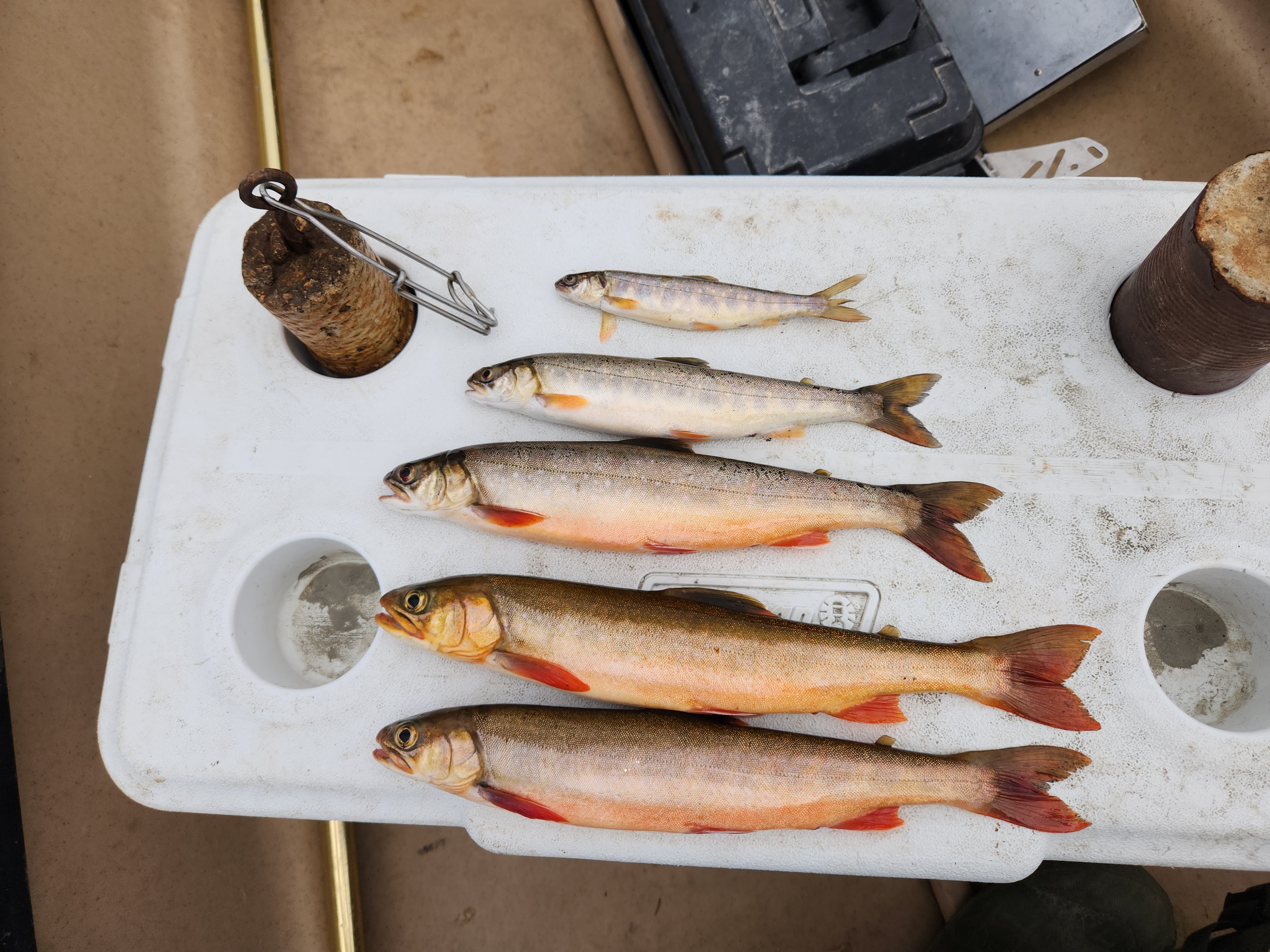January 18, 2024 at 9:35 am
Big Wadleigh Pond is a small pond in northern Piscataquis County that is the home to native Arctic charr and brook trout and is a popular fishing destination. In 2006, Maine Department of Inland Fisheries and Wildlife (MDIFW) documented an illegal introduction of invasive rainbow smelt. We knew from experience that an introduction of smelt would threaten the native charr population. After several years of monitoring the situation, a chemical restoration project occurred in the fall of 2012. MDIFW took extraordinary steps to preserve the native strains of both Arctic charr and brook trout prior to the restoration. We implanted radio telemetry tags in 10 adult charr in the spring then returned in the fall to locate these fish, and hopefully many others, as they prepared for fall spawning. We were able to capture approximately 100 charr, including nine of the 10 radio tagged fish, and nearly 300 adult brook trout.
These fish were all relocated to Mountain Springs Trout Farm in Frenchville. They were raised and successfully spawned by hatchery operator Gary Picard. Several generations were reared as we began the process to restore the native species to Big Wadleigh Pond. The native charr from Big Wadleigh Pond were particularly challenging to raise in the hatchery setting. These fish could only be fed once a day or health issues would arise. They were also prone to “sparring” with each other, especially as spawning season approached which resulted in injuries and some mortality. Thanks to the expertise and innovation of Gary Picard, he was able to overcome these challenges and successfully cultivated healthy and robust charr.
One of MDIFW’s largest restorations took place in early November 2012 amid snow flurries and a very brisk northwest wind. It was a Herculean effort by members of the Fisheries Management Section with some much-appreciated help from MDIFW’s Engineering Division. The project centered around the application of liquid and powder formulations of a product called Rotenone to eradicate the invasive rainbow smelt. By the following year, with the smelt eradication successful, the pond was ready to be stocked with the native strains of Arctic charr and brook trout. Juvenile charr and brook trout were stocked into the pond in fall 2013 and spring 2014, along with all the remaining brood fish.
The last remaining charr were stocked into the pond in October 2014. These fish were 3 years old, and many were sexually mature and ready to spawn that fall. We stocked these fish in the area that we believed to be the historical charr spawning site in Big Wadleigh Pond. We had already observed brook trout fry in the pond so we were confident this restoration would be successful. It was now up to the charr to do their thing.
We held off from any netting or evaluation that might create mortality over for the next 8 years. We wanted to give these fish time to re-establish. Catch and release regulations were implemented after the restoration, which allowed angling to take place but protected the fish as the populations recovered. We heard from anglers that both charr and brook trout were readily caught in the pond. We were confident our efforts had paid off. We returned to Big Wadleigh Pond with our sampling gear in 2023. We were able to document multiple age classes of charr and brook trout. As anglers had noted, the charr were very abundant. These fish ranged from 7 to 14 inches with the larger fish sexually mature and getting ready to spawn in the fall.

The chemical restoration of Big Wadleigh Pond was a tremendous success, much like similar projects at Big Reed Pond and nearby Thissell Pond. Chemical restoration projects, sometime referred to as “reclamations”, can eliminate invasive or unwanted fish species under the correct circumstances. It allows us to literally “reclaim” a water with a native fish population that may have otherwise been lost forever from the ecological and angling landscape. Chemical restoration can be used in coordination with a hatchery rearing program to restore our precious native and wild fish populations across the State of Maine. We can also use this technique to create new fishing opportunities with hatchery brook trout. Chemical restoration is often a tool of last resort in the fisheries biologist’s toolbox, but it has proven to be critically important and effective here in Maine and across the country. You can learn more about reclaiming natural systems and native fisheries through chemical restoration here.
Funding for this massive project came from multiple sources and we especially want to acknowledge The Eastern Brook Trout Joint Venture, The Maine Outdoor Heritage Fund, Clayton Lake Woodlands Holdings, and the Natural Resource Education Center at Moosehead for their support.